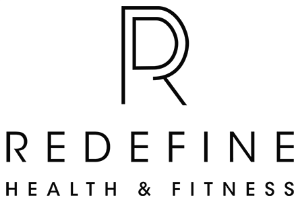IS YOUR NECK STABLE?
"Core stability" is a widely used term. Physical therapists, physicians, and fitness professionals encourage strengthening the abdominal region to reduce lower back pain and prevent further injury. Those well versed in anatomy may even be able to mention the transverse abdominus as the primary muscular stabilizer of the lumbar spine. What is less widely understood is that similar principles apply to the cervical spine. These group of muscles are referred to as the "deep neck flexors." They are located along the front of the neck.
The deep neck flexors consist of the longus colli, longus capitus, rectus capitus anterior, and rectus capitus lateralis. These muscles help stabilize the cervical spine, protecting the joint structures, discs, and surrounding neural tissue during motion. The cervical spine is the most mobile portion of our spine, thus stability is highly important in preserving its longevity. Without stability, we are at risk of developing disc herniations, accelerating degeneration at the individual joints, and experiencing radiating arm symptoms. The cervical spine is also residence to a large amount of joint proprioceptors. Thus, if we lack stability at the neck, these proprioceptors are not accurately able to judge where our head is in space, contributing to dizziness and headaches.
There are a multitude of reasons why the stability and motor control of the deep flexors may be compromised. One of the main ways is through whiplash injuries. It is reported that 25% of Americans will be involved in a car accident in their lifetime. Through whiplash injury, the deep neck flexors experience a deep strain, and as many people don't seek rehabilitation for these muscles after trauma, they never properly heal. Besides car accidents, whiplash injuries can also occur during roller coaster rides, falls from other recreational vehicles or water sports, or collision injuries.
Besides through trauma, the motor control of the deep neck flexors can also become inhibited from chronic disuse. Most people spend long durations of time sitting at work, in the car, and at home. As we become more sedentary, the incidence of "postural cross syndrome" is growing. Postural cross syndrome is a sitting based condition that develops as the affected person spends more time working in front of them (ex: computer work) and does not balance the musculature of the back body. The shoulders begin rounding forward, and the chin protrudes forward causing excessive extension in the upper cervical spine. Over time, this person develops tightness in the musculature in the front of the chest (pectoralis minor) and in the back of the head (suboccpitals). Conversely, lengthened muscle develops in the mid back (rhomboids, middle/ lower trapezius) and in the front of the neck (the deep neck flexors), hence the name "postural cross syndrome." As the deep neck flexors become lengthened, the sarcomeres of the muscle cannot align correctly when contracting the muscle. This weakens the deep neck flexors and they cannot adequately control the range of motion at the cervical spine which causes instability.
There are many steps you can take to improve the strength and motor control of your deep neck flexors. A qualified fitness professional or physical therapist can teach you how to properly engage the deep neck flexors and avoid compensatory patterns and involvement of the superficial musculature. These same professionals can help with postural education and designing a flexibility and endurance based strength program to address postural cross syndrome. You may also consider an ergonomic consultation on your work station, home office, and car.
As we continue to live longer and our lifestyles become more sedentary, it is becoming increasingly important to address strength impairments at our spinal structures to stay active, independent, and pain free as we age. Seek consultation from your physician, physical therapist, or qualified fitness professional before beginning a new exercise routine. If you have experienced trauma at the cervical spine, seek diagnostic imaging and medical consultation before resuming exercise.
Carla Pryor PT, DPT, OCS, RYT 200. Co Owner of Redefine Health and Fitness located in North County San Diego. Redefine is a wellness based company focused on providing excellent comprehensive and research driven care to assist clients in meeting their fitness and nutrition goals. Contact carla@redefinehealthandfitness.com for further inquiry.

